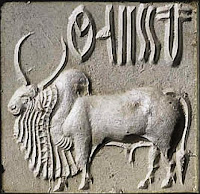SubEditor – Maryam Sayyed
Bhaurao Annapurna Bende
The non-Brahmin festival in Indian agricultural culture is celebrated not only by the farming community but by everyone. Naturally, this festival raises some questions. What is the subconscious reasoning behind this festival? Are there any material realities connected to it? Why is this festival still the most popular among farmers?
Around 2800 BCE, archaeological evidence suggests that the wooden plow was discovered. The first evidence of the plow was found in the cultivated fields of Kalibangan, based on archaeological findings. Before this, during the pre-Indus period, agriculture was carried out by hand, without any advanced farming tools, under matriarchal societies. This was limited to specific areas where basic tools could work, like the fertile silt deposited by rivers. The discovery of the plow allowed for the expansion of agricultural land beyond the limited areas along rivers, making it possible to farm vast river basins with the help of oxen and the plow. The magical essence that women had in cultivating or increasing productivity became inactive. The task of domesticating oxen for plowing was done by the male members (Ganardha) of the matriarchal society. With the discovery of the plow, agriculture as a means of production transitioned from women’s hands to men’s. In the post-Indus period, the discovery of the wooden plow led to the rise of patriarchal societies, where farming was done with the help of oxen.Compared to hand cultivation in matriarchal societies, plow-based agriculture with the help of oxen produced double the yield. The discovery of the plow made it possible to expand agriculture across vast areas, beyond the limited river-borne fertile fields.
In hand cultivation, the community could only cultivate small areas, which had limitations in terms of land and productivity. However, with oxen-assisted farming, these limitations were eliminated, and more land could be brought under cultivation. This resulted in overall agricultural expansion and increased production, leading to prosperity and growth. The Indus Valley civilization saw unprecedented development in agriculture, industry, trade, arts, and architecture. India began to trade with the world, achieving great prosperity. This was all made possible by plow-based agriculture with the help of oxen.
Thus, the ox became the symbol of this development and prosperity of the Indus people and was reflected on important seals of the Indus civilization.
Even today, the bull indicates a bullish trend in the stock market. The discovery of the plow and oxen-assisted farming replaced the low productivity of matriarchal societies with a production revolution. Through increased production, the Indus people made incredible progress in trade, arts, and architecture. The foundation of this development and prosperity was oxen-assisted farming. Hence, the respect and reverence for oxen became a social practice among the Indus people. However, this material reality of the time settled into the subconscious after a few generations, and it continued as a tradition and ritual passed down through generations. When the material reality of the conscious level disappeared into the darkness of the subconscious, the reverence for oxen, a symbol of material prosperity, remained in the form of rituals like the BailPola festival.
Even today, on the day of this festival, those who own oxen worship them, and those who don’t make clay oxen and worship them. Best wishes to everyone for the BailPola festival, which is connected to the Non-Brahmin agricultural culture !
Contact to Writer : 7499520294
Please, post your reaction in the comment box after reading the article
Read This: History: The Indians: A Useful Reference Book for Scholars of South Asian History






Thank you so much for published my artical in your’s enews paper.